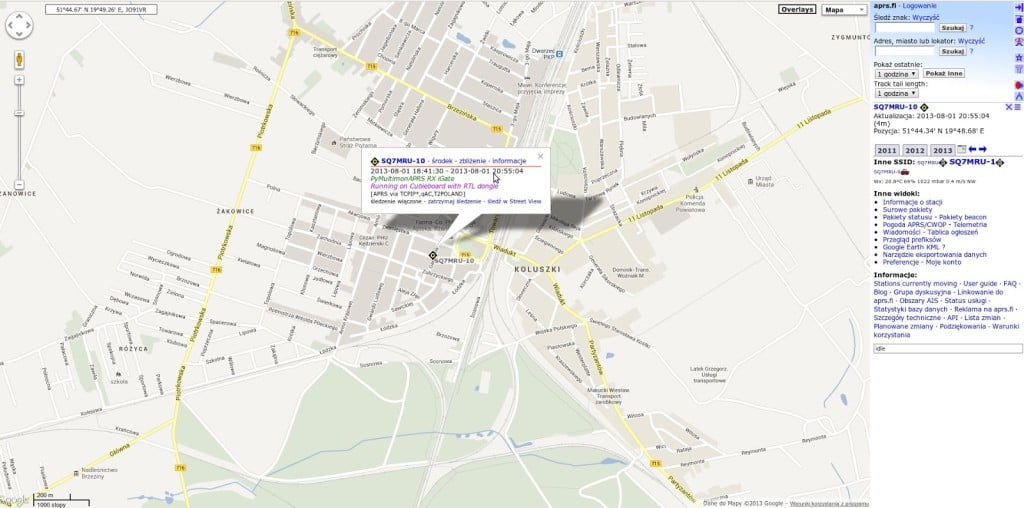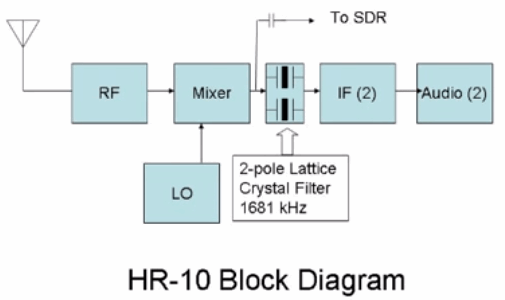These results confirm the feeling that many RTL-SDR users have had: that the E4000 is more sensitive in the lower frequencies, and that the R820T is more sensitive in the higher frequencies, which is why it is recommended for ADS-B. The results also show that the R820T is better in terms of Image Rejection and Internal Signal Birdies.
Image Rejection
Because the E4000 is a Direct Conversion Receiver, it has an Image Rejection problem. By switching on Correct IQ in SDR# a more or less acceptable 50dBs are reached. For the same reason, a "hump" shows in the center of the spectrum display. By using a well filtered external power supply (not from the USB connector) the hump might be reduced.
� �� �
Internal signals
The E4000 shows many signals actually not present at its input ("birdies"). Birdies are easy to recognize: most of them (except the harmonics of the clock) vary their frequency when moving the spectrum window in frequency. Many of them even move up if you move the window down in frequency.
The R820 is much cleaner in this respect: besides the harmonics of the clock (28.8MHz) only few birdies show up.
Sensitivity
Both dongles have a very high sensitivity. Between about 50 and 450MHz the E4000 is about 5dB better than the R820 (-139dBm vs -134dBm). At 1000MHz the E4000 is about 8dB less sensitive (-129dBm vs -137dBm). No measurements could be made above 1040MHz.
Overload and 1dB Compression
If a signal is strong enough, it may cause overload, i.e. many (unwanted) signals show up on the spectrum display that are not present at the antenna input. Also, if we listen to a desired signal, another signal (if strong enough) may cause a reduction of the S/N ratio of the desired signal.
Both dongles have a digitally tuned RF filter after the preamplifier that (together with the following digital signal
processing) improves the overload/1dB compression limit considerably.
- The filter of the E4000 is about +/-0.8MHz wide, but less steep than the filter of the R820.
- The filter of the R820 is about +/-3MHz wide, but steeper than the filterof the E4000.
For the E4000 the overload/1dB compression limit is not linearly dependent of the gain set in Configuration of SDR#:
if the gain is reduced by 13/20/30dB, the overload limit is improved by only 7/14/25dB (measured on 145MHz only).
For the R820 the overload/1dB compression limit is quite linearly dependent of the gain set in Configuration of SDR#: if the gain is reduced by 11/20/30dB, the overload limit is improved by 12/20/30dB (measured at 145MHz only).
For both dongles it seems there is nothing to be gained from activating RTL AGC or Tuner AGC.
Intermodulation
Intermodulation products in general show up close to the overload/1dB compression limits. However, if the strong
signal is on the roll off of the filter, they appear well before this limit.
Aliasing
Aliasing always occurs if an insufficiently band limited signal is sampled, i.e. if the signal to be sampled contains frequencies above half the sampling frequency. Thus, aliasing is an effect showing up in many SDRs, not only in these dongles. In both types of dongles there is not much space for brick wall filters. Therefore, aliasing effects are well visible with both dongles.
What do we learn from these tests?
- Both types of dongles are very sensitive. The choice depends on which frequency range you are most interested in.
- Considering internal signals and image rejection, the R820 is much cleaner than the E4000.
- Set the spectrum display of SDRSharp to show a range of not more than 60db above the noise floor. If a signal is close to the top, you know you are close to overload.
- Both types of dongles are prone to overload by strong signals within their filter bandwidth: +/-0.8MHz for the E4000, +/-3MHz for the R820. Therefore, keep signals within this bandwidth to not more than about 60dB above the noise floor
by reducing the gain. If increasing the gain does not audibly increase the signal to noise ratio of the desired signal any more, reduce the gain by one step. Do not switch on RTL AGC or Tuner AGC, as it seems there is nothing to be gained.
- Outside their filter bandwidth both types of dongles can live with much higher signals without showing serious degradation. Use the gain control as explained above to check a possible reduction of signal to noise ratio of the desired signal or the appearance of "new" signals not present at the antenna
input.
- Intermodulation occurs if several strong signals are present within the bandwidth of the dongle. Their individual power adds up (add 3dB per equally strong signal). Therefore, in frequency bands with many strong signals, e.g. broadcast bands, the gain must be reduced even further. Watch for "new" signals appearing when increasing the gain, and then reduce the gain by one step.
- If very strong signals are present at the antenna input >-40dBm), they should be attenuated by bandstop or notch filters.




